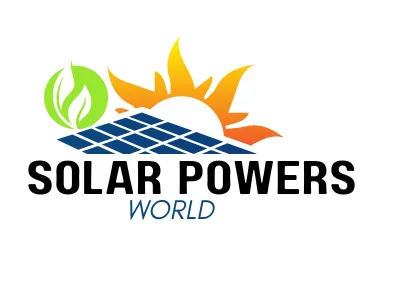In the world of renewable energy, people often mix up solar power and solar energy. But it’s key to know the difference for understanding how we produce sustainable energy and its effects on the planet. Solar energy is the raw power from the sun. Solar power is the electricity we get when we use solar panels to capture and change that energy.
The sun gives us a huge amount of energy, creating about 620 million metric tons of hydrogen every second. If we could use all the sunlight hitting Earth for just 90 minutes, it would power our whole world for a year. Thanks to better solar panel technology and lower costs, using solar power is getting cheaper and easier for homes and businesses.
A typical solar system for a house has 15 to 25 panels. Each panel has 36 to 144 cells. These panels and inverters work together to turn solar energy into electricity we can use. The Canadian government helps homeowners go solar with grants and loans, making it easier to switch to green energy.
Choosing solar power helps us use less coal and natural gas. It’s also good for the planet. As solar panels get cheaper and work better, the cost to get your money back on solar energy in Canada is now about 5 to 7 years. This makes solar energy a smart choice for both the wallet and the earth.
Key Takeaways
- Solar Power vs Solar Energy.
- Solar energy is the raw energy from the sun, and solar power is the electricity we make from it using solar panels.
- The sun creates a huge amount of hydrogen every second, and using a small part of it could power the whole world.
- A home solar system has 15 to 25 panels, each with 36 to 144 cells, and uses inverters to turn solar energy into electricity.
- The Canadian government gives money help for homeowners to put in solar panels, making green energy easier to get.
- Putting money into solar power cuts down on traditional energy use and helps the planet, with a payback of about 5 to 7 years in Canada.
Understanding the Basics of Solar Power and Solar Energy
To understand solar power and solar energy, we need to know about power and energy. Power is how fast energy is made, used, or moved. For solar tech, it’s the electricity made by solar panels right now. Energy is the ability to do work and is measured in kilowatt-hours (kWh) for electricity. In solar energy, it’s the total electricity made by solar panels over time.
Defining Power and Energy
Power and energy are key to seeing how solar tech uses the sun’s rays for clean energy. Solar panels turn sunlight into electrical energy through the photovoltaic effect, found in 1839. This led to the silicon PV cell in 1954 at Bell Labs, starting modern solar tech.
Solar PV panels make electricity, while solar thermal panels use the sun’s heat for different uses. The power of a solar panel depends on its size, efficiency, and sunlight it gets. The energy it makes over time is its power and how long it’s in the sun.
The Role of Solar Power and Solar Energy in Sustainable Living
Solar power and energy are key to living sustainably and using less fossil fuels. Using solar energy cuts our carbon footprint and fights climate change. Solar tech has made it easier and cheaper for people and businesses to use solar power. This leads to saving money and helping the environment.
| Country | Solar Power Capacity (GW) |
|---|---|
| China | 253.4 |
| United States | 73.8 |
| Japan | 67.0 |
| Germany | 53.8 |
| India | 42.8 |
More countries are using solar power, with leaders like China, the U.S., Japan, Germany, and India. As tech gets better and costs go down, solar power and energy will play a bigger part in a sustainable future.
What is Solar Power?
Solar power turns sunlight into electricity using photovoltaic cells in solar panels. This green energy can change how we power our homes, businesses, and communities. The solar industry has grown by 25% each year for the past decade. Now, the U.S. has about 137.5 gigawatts of solar power.
The Photovoltaic Effect: Harnessing Sunlight for Electricity
In 1954, Bell Labs discovered the photovoltaic effect, starting solar power’s journey as a key electricity source. This effect happens when sunlight hits silicon, freeing electrons and creating electricity. Thanks to tech advances, solar power’s cost has fallen by 90% in ten years, making it a top choice for energy.
Solar power is very efficient. Enough sunlight hits the earth every hour to meet global energy needs for a year. In fact, the sun’s energy in just an hour and a half could power the world for a year. Solar energy works well on all scales, big and small, making it a flexible energy solution.
Applications of Solar Power in Daily Life
Solar power is used in many ways, from rooftop panels to solar farms and even in small devices like calculators and water pumps. Residential solar and commercial solar installations are getting more popular. Solar power stations can make hundreds of megawatts of electricity. Utilities also build big solar plants to give energy to customers.
| Type of Solar Panel System | Description |
|---|---|
| Residential Solar | Solar panels used in residential systems found on rooftops across the United States |
| Commercial Solar | Solar installations on businesses and commercial properties |
| Utility-Scale Solar | Large-scale solar power plants built by utilities to provide energy to grid-connected customers |
| Community Solar | Solar installations shared by multiple community members, allowing access to solar power for those who cannot install their own systems |
| Solar-Plus-Storage Systems | Solar panel systems combined with energy storage solutions, enabling the use of solar power even when the sun is not shining |
Solar power is used for more than just electricity. Solar-powered refrigerators in Africa keep vaccines at safe temperatures, fighting malaria. Japan plans to send solar energy from space to Earth by 2025, showing solar power’s future potential.
What is Solar Energy?
Solar energy comes from the sun’s rays and includes all types of energy from the sun. It’s not just about making electricity. Solar energy is vital for life on Earth, giving us warmth, light, and helping plants grow.
Solar thermal systems use the sun’s rays to make heat. This heat can warm water or power industrial processes. Using solar thermal tech is a green way to heat things, cutting down on fossil fuel use.
The sun keeps our planet warm through the greenhouse effect. Greenhouse gases trap heat, keeping our planet cozy. But too much of these gases from human actions can cause climate change and harm the environment.
Solar energy has its downsides, like being available only during the day and being affected by the weather. This can make it hard to have a steady energy supply. Also, starting solar projects can be expensive, but costs are dropping.
Knowing the good and bad about solar energy helps us use it better. We can find ways to overcome its challenges. For more info on solar power for homes, check out Solar Power World.
| Year | Global Solar PV Capacity (GW) | Annual Capacity Addition (GW) |
|---|---|---|
| 2010 | 40 | 17 |
| 2015 | 227 | 51 |
| 2020 | 710 | 125 |
The table shows how solar PV capacity has grown a lot in ten years. It went from 40 GW in 2010 to 710 GW by 2020. This shows more people are using solar energy as a clean power source.
In conclusion, solar energy is more than just electricity. It helps with heating, supports life, and is part of our planet’s balance. As we use solar energy more, we must think about its benefits and challenges for a green future.
Solar Thermal Systems: Capturing the Sun’s Heat
Solar thermal systems use the sun’s energy to make heat for different uses. They are a green way to heat instead of traditional methods. These systems use solar collectors like flat-plate, evacuated tube, or concentrating ones. The heat goes to a fluid, usually water or air, which moves through the system to deliver the heat where it’s needed.
Solar Water Heaters: Reducing Energy Bills and Conventional Heating Reliance
Solar water heaters are a key use of solar thermal systems. They heat water with solar collectors and store it in a tank for later use. This cuts down on the need for traditional heating sources like electricity or gas. It leads to lower energy bills and less carbon emissions.
There are two main types of solar water heaters: active and passive. Active systems use pumps to move the water, while passive ones use natural flow. The choice depends on the climate, space, and how much hot water is needed.
| System Type | Efficiency | Lifespan |
|---|---|---|
| Low-temperature solar thermal | 20% to 40% | 20-25 years |
| Medium-temperature solar thermal | 40% to 60% | 20-25 years |
| High-temperature solar thermal (CSP) | Up to 80% or more | 20-25 years |
Industrial Applications of Solar Thermal Energy
Solar thermal energy is also used in industries. Low-temperature systems work well for things like heating spaces, food processing, and making fresh water. Medium-temperature systems can make steam, process heat, and power through CSP plants.
CSP plants focus the sun’s energy to create high temperatures. This heat can make steam for electricity. This tech could meet a big part of the world’s energy needs. It’s said that the sun’s energy in just 50 minutes could power the world for a year.
For solar thermal systems to work best, thermal energy storage is key. This stores extra heat made during sunny times for use when it’s cloudy or when more energy is needed. With this storage, solar thermal systems can be a steady and reliable energy source, a good alternative to fossil fuels.
The Greenhouse Effect and Solar Energy’s Role in Sustaining Life
Solar energy is key to keeping life on Earth. When the sun’s rays hit the Earth, about 30% bounce back into space. The rest, 70%, stays on the planet, warming it up. This warmth turns into infrared radiation, trapped by gases like carbon dioxide and water vapor. This creates a greenhouse effect that keeps the Earth’s temperature just right for life.
The greenhouse effect balances the Earth’s temperature with the right amount of gases in the air. Without it, our planet would be too cold to support life. But, human actions like burning fossil fuels and cutting down trees have made more greenhouse gases. This makes the greenhouse effect stronger and leads to climate change.
How Solar Energy Maintains Earth’s Temperature
Solar energy powers the Earth’s climate. How much solar energy the Earth gets affects its temperature. Things like the Earth’s tilt and changes in the sun’s energy can make the climate change over time.
The Earth’s atmosphere acts like a blanket. It lets the sun’s rays in but keeps the heat from leaving. This keeps the Earth’s average temperature at about 15°C (59°F), perfect for life.
The Importance of Greenhouse Gases in Trapping Heat
Greenhouse gases like carbon dioxide, methane, and water vapor are crucial for the greenhouse effect. They absorb and send back infrared radiation, keeping the heat in the atmosphere. The amount of these gases affects how strong the greenhouse effect is and the Earth’s temperature.
Even though these gases help keep the climate right, too much of them can be bad. Human actions have made more of these gases, making the greenhouse effect stronger. This is the main reason for climate change, causing global warming, sea-level rise, and other problems that threaten our planet.
| Greenhouse Gas | Atmospheric Lifetime (years) | Global Warming Potential (100-year time horizon) |
|---|---|---|
| Carbon Dioxide (CO2) | Variable | 1 |
| Methane (CH4) | 12 | 28-36 |
| Nitrous Oxide (N2O) | 121 | 265-298 |
Understanding the greenhouse effect and solar energy’s role is key to fighting climate change. Using solar power and sustainable ways can cut down on greenhouse gases. This helps make a more stable and resilient climate for the future.
Photosynthesis: The Foundation of Life Powered by Solar Energy
Photosynthesis is how life on Earth turns sunlight into chemical energy for making carbohydrates. This process started about 1.5 billion years ago. It’s mainly done by plants, algae, and some bacteria (cyanobacteria). They use sunlight and carbon dioxide to make carbohydrates. This energy supports life on Earth, either directly or indirectly.
Photosynthesis is very important. It changes around 200 billion tonnes of CO2 into organic compounds every year. It also adds about 140 billion tonnes of oxygen to the air. This process supports life and helps in the carbon cycle by removing CO2 and making oxygen.
Land plants have leaves that are key for photosynthesis. Each leaf cell has about 100 chloroplasts. Consumers, like herbivores and omnivores, get energy from plants that make food through photosynthesis. This means that many foods we eat, like meats and bread, come from plants that use sunlight for photosynthesis.
Ocean algae also make a lot of food and oxygen for us through photosynthesis. Cyanobacteria do about half of the world’s photosynthesis. This shows how vital photosynthesis is for our food chains and ecosystems.
| Photosynthetic Organism | Contribution to Global Photosynthesis |
|---|---|
| Cyanobacteria | ∼50% |
| Land Plants | ∼40% |
| Oceanic Algae | ∼10% |
In summary, photosynthesis is key to life on Earth. It uses solar energy to make organic compounds. This process supports the food chain, keeps the carbon cycle going, and gives energy to many species. As we look for sustainable energy, we must value photosynthesis and the life it supports.
Fossil Fuels: A Nonrenewable Legacy of Solar Energy
Fossil fuels like petroleum, natural gas, and coal have powered the world for centuries. But, it’s important to know they are a legacy of ancient solar energy. These nonrenewable resources formed from the sun’s energy stored in living organisms millions of years ago.
The Origins of Petroleum, Natural Gas, and Coal
The story of fossil fuels starts with ancient plants and animals that lived on Earth long ago. These organisms used the sun’s energy to grow and survive through photosynthesis. When they died and sank to the bottom, they began a long process of change.
This change turned them into the fossil fuels we use today. Petroleum and natural gas came from marine microorganisms buried deep in the Earth. Coal formed from the remains of ancient swamps and forests. The Earth’s heat and pressure turned this organic matter into the energy-rich fuels we rely on.
Environmental Challenges Associated with Fossil Fuels
Fossil fuels have greatly helped modern society, but they also bring big environmental problems. Burning them releases greenhouse gases like carbon dioxide, which warms the planet and changes the climate. They also pollute the air and water, destroy habitats, and harm ecosystems.
| Fossil Fuel | Environmental Impact |
|---|---|
| Petroleum | Oil spills, air pollution, greenhouse gas emissions |
| Natural Gas | Methane leaks, groundwater contamination, greenhouse gas emissions |
| Coal | Air pollution, acid rain, land degradation, greenhouse gas emissions |
Using fossil fuels has also left a big carbon footprint. The carbon dioxide they release stays in the atmosphere, making the greenhouse effect worse. This leads to higher temperatures, rising sea levels, and more extreme weather.
To fix these problems, we need to switch to cleaner energy sources like solar and wind power. By using sustainable energy and using less fossil fuel, we can lessen the harm to our planet. This will help us move towards a greener future.
Solar Power vs Solar Energy: Key Differences and Similarities
Solar power and solar energy are often used together, but they mean different things. Solar power is about making electricity from sunlight using photovoltaic cells. Solar energy is a broader term that includes all types of energy from the sun, like heat and the energy that supports life on Earth. Knowing the differences and similarities helps us make better choices about renewable energy and being sustainable.
Scope and Applications
Solar power and solar energy have many uses, from making electricity for homes and businesses to heating water and powering industries. Solar power systems turn sunlight into electricity, powering everything from small homes to big power plants. Solar thermal systems use the sun’s heat for tasks like heating water and spaces, and for industrial processes.
Solar energy does more than just make electricity. It’s crucial for life on Earth, keeping our planet warm through the greenhouse effect and making food through photosynthesis. The greenhouse effect traps solar energy, keeping Earth warm enough to support life. Photosynthesis turns sunlight into food and oxygen, supporting all living things.
Environmental Impact and Sustainability
Solar power and solar energy are great for the planet, making them key to a sustainable future. Using the sun’s energy cuts down on fossil fuel use, which is bad for the environment. Solar energy is clean, doesn’t cause climate change, and doesn’t harm the environment when made.
Investing in solar tech helps fight climate change and makes energy use more efficient. Solar power cuts down on energy loss during transport. It can also work with storage solutions like batteries, giving us reliable power even when the sun isn’t shining.
| Energy Source | Global Energy Production (2018) |
|---|---|
| Fossil Fuels | 81% |
| Hydroelectricity and Other Renewables | 14% |
| Nuclear Energy | 5% |
The table shows how much fossil fuels dominate global energy use as of 2018. This highlights the need for more renewable energy like solar power. By using solar tech and other green energy, we can lower our carbon footprint, clean the air, and make a better planet for the future.
The Environmental Benefits of Embracing Solar Technology
Solar technology is a key tool in fighting climate change and protecting our environment. It uses the sun’s energy to cut down our use of fossil fuels. This reduces the environmental impact of solar energy production. Using solar power helps fight climate change and makes the planet healthier for future generations.
Reducing Greenhouse Gas Emissions and Air Pollution
Solar technology greatly reduces greenhouse gas emissions. It makes electricity without the harmful pollutants from burning fossil fuels. This means we can lower our carbon footprint and breathe cleaner air.
Solar panels need very few natural resources to work, unlike traditional energy methods like coal mining. These methods harm the environment by destroying habitats and polluting water. Solar panels also don’t harm local ecosystems, so they don’t need a lot of land.
Mitigating Climate Change and Promoting a Cleaner Planet
Solar technology helps fight climate change by cutting down greenhouse gas emissions. More people are using solar energy, which means using less fossil fuels and cleaner air. Switching to renewable energy is key for a healthier planet.
Solar energy uses much less water than traditional power plants. This helps save water and eases the strain on local water resources. Companies like REC Group are working to use even less water in making solar panels, as shown in the table below:
| Year | Water Consumption per MW | Reduction |
|---|---|---|
| 2021 | 761 m³ | – |
| 2022 | 628 m³ | 17.5% |
REC Group’s efforts have saved about 171,487 m³ of water each year. That’s enough water for almost 3,000 people in Singapore. They plan to cut water use by 5% for solar cells and 10% for panels by 2024.
Investing in solar technology is good for the environment and can save money. Solar panels let homeowners and businesses make their own electricity. This means less reliance on big power grids and lower or no electricity bills over time.
The solar industry also creates jobs and boosts the economy. It offers work in making, installing, selling, and maintaining solar panels. By choosing solar technology, we help make a cleaner planet and support sustainable economic growth.
Economic Advantages of Investing in Solar Power and Solar Energy
Investing in solar power and solar energy has many benefits for homeowners, businesses, and communities. It helps reduce the need for traditional electricity, leading to big savings on monthly bills. This can mean immediate savings by using less power from the grid.
In Florida, a small solar panel system can save homeowners up to 20-30% each year. Solar panels last 25 to 30 years with care. Plus, homes with solar panels sell for about four percent more, adding value.
Businesses with big energy needs, like factories or offices, gain a lot from solar power too. In Florida, they can earn 15-30% or more on their solar investment, saving a lot each year. These savings can help grow the business and make it more sustainable.
Many governments offer solar incentives and rebates to encourage solar use. With net metering policies that let you sell extra energy back, solar power is even more appealing. Florida is leading the way in solar, thanks to pro-solar policies and its strong solar capacity.
Though solar power might cost more upfront, the long-term savings and tax credits make it a smart choice. On average, people can pay off their solar system in six to 10 years. Solar loans with low-interest rates are also available for up to five years, making it easier to finance solar projects.
| Investment | Annual Savings | Break-Even Point |
|---|---|---|
| Residential Solar System | 20-30% ROI | 6-10 Years |
| Commercial Solar System | 15-30% ROI | 6-10 Years |
Investing in solar energy also boosts the economy by creating jobs, lowering energy costs, and supporting renewable energy goals. The U.S. wants to get 80% of its energy from renewables by 2030 and 100% carbon-free electricity soon after. Every solar panel in Florida moves us closer to these goals.
Going solar offers more than just personal savings. It brings benefits like energy independence, higher property values, a good corporate image, and better public relations. As electricity prices go up, switching to solar is a smart move for saving money and helping the planet.
Conclusion
Solar power and solar energy are key to a sustainable and clean energy future. Solar technology advancements have made using the sun’s energy easier and more efficient. Now, more people and businesses are turning to solar power worldwide.
Solar power and solar energy are changing how we make and use electricity. By choosing solar power, we can use less fossil fuel, cut down on harmful emissions, and fight climate change.
As we see the value of solar technology, the future is looking up. With ongoing research, we’ll see even better and cheaper solar solutions soon. Supporting solar projects helps us create a cleaner world and a future with less dependence on energy from fossil fuels. The solar energy future is here, and it’s time to seize the sun’s endless possibilities.





















